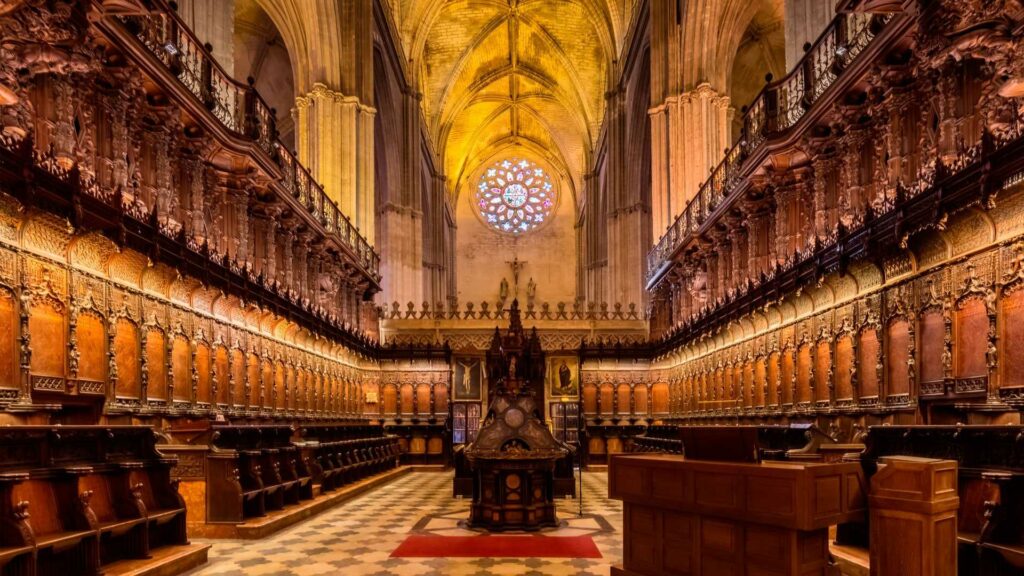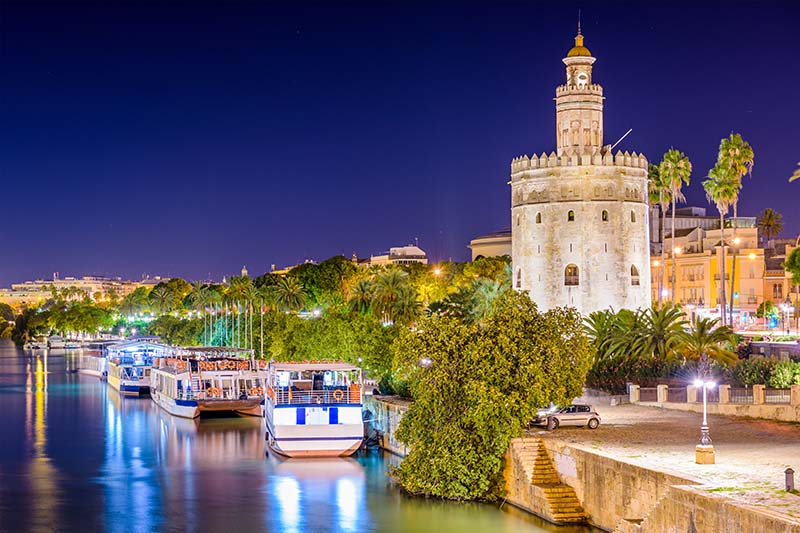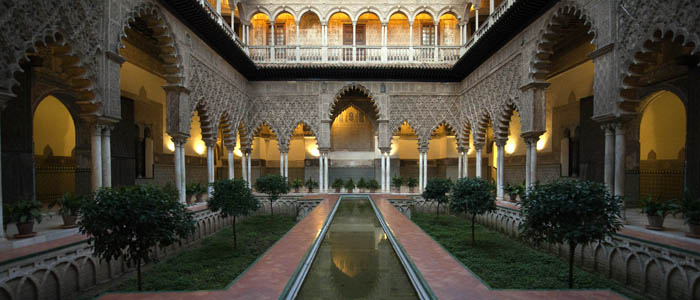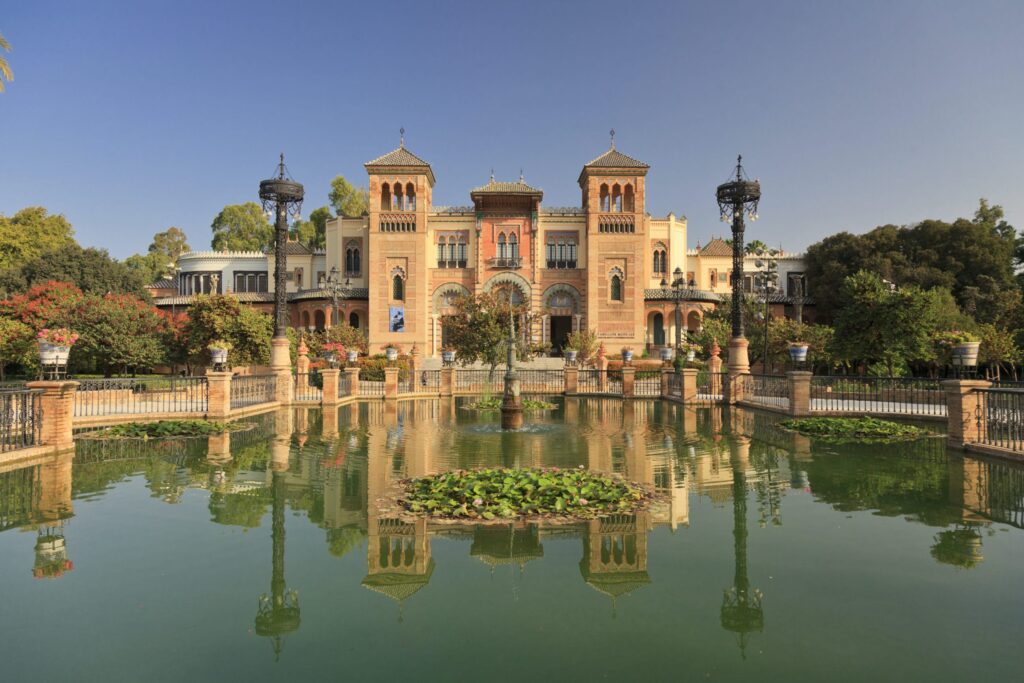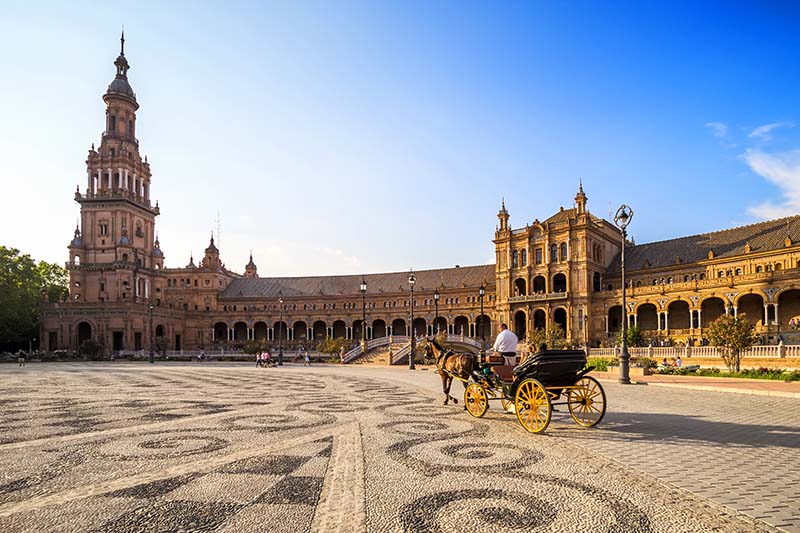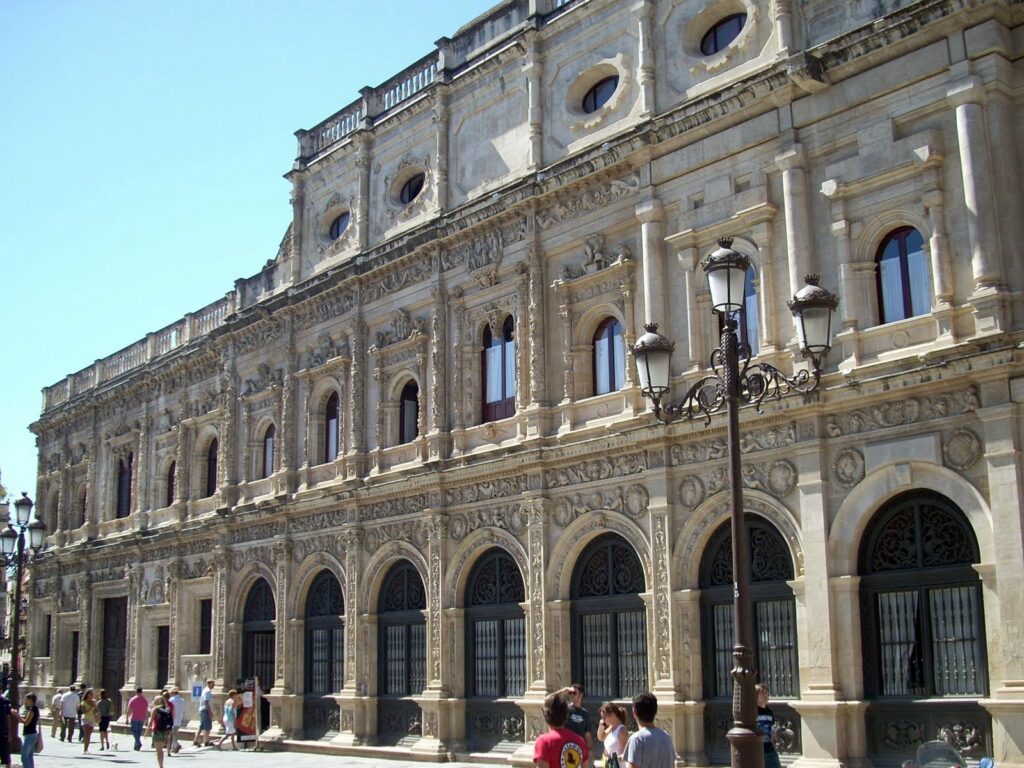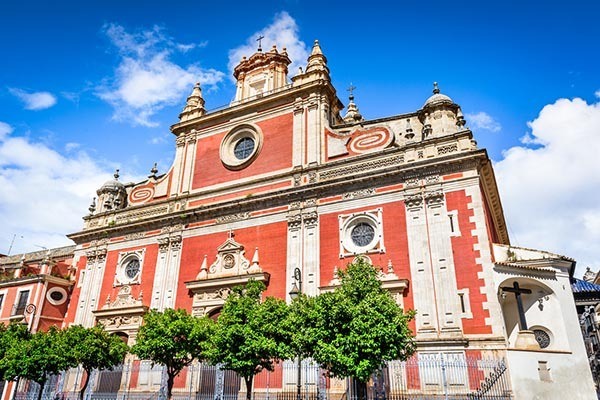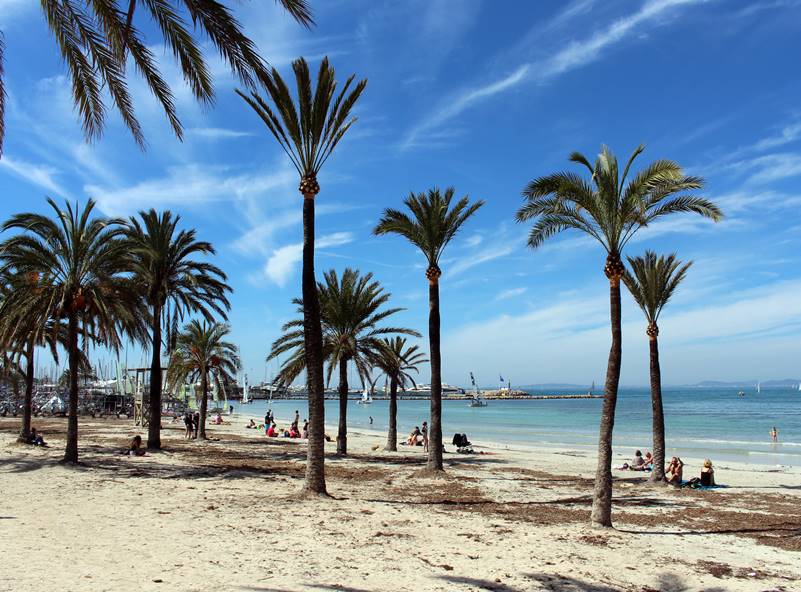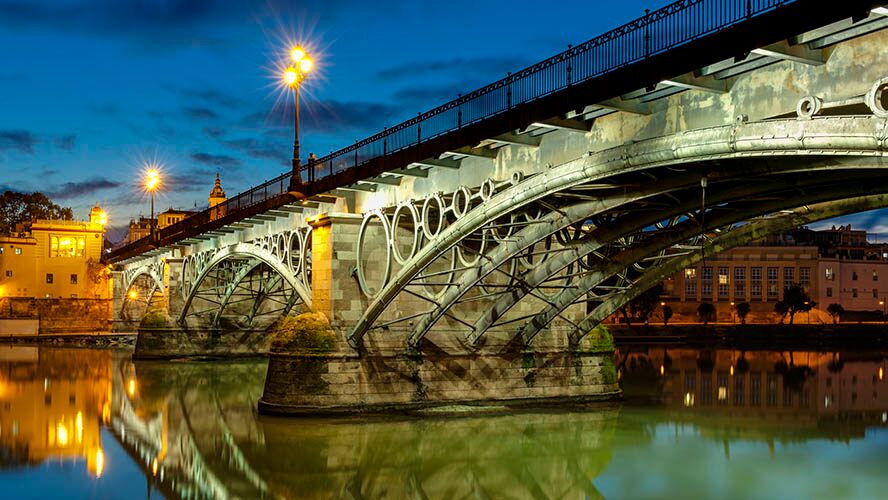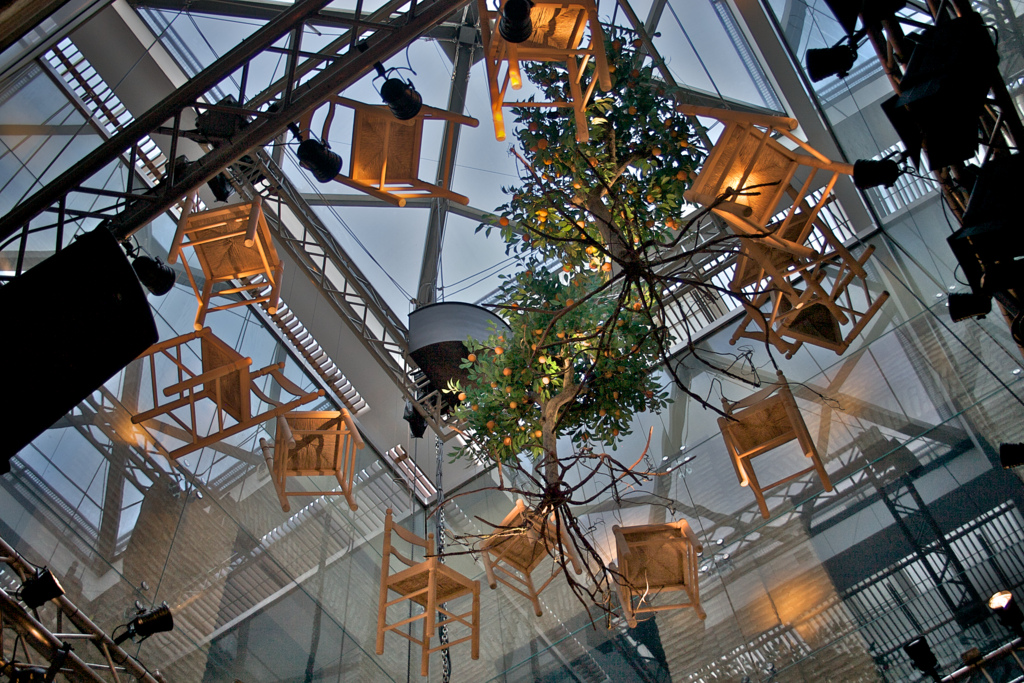Welcome to the charming city of Seville, where history and culture blend seamlessly to offer visitors an unforgettable experience. From the stunning Alcázar palace to the iconic Giralda Tower, Seville boasts an array of fascinating attractions that showcase the city’s rich heritage. Immerse yourself in the vibrant atmosphere of the Triana neighborhood, explore the ancient Roman ruins of Itálica, or simply savor the delicious Spain Authentic Dishes at one of the many tapas bars. Join us on a journey through the top 10 attractions in Seville and discover why this city is a must-visit destination in Spain.
Table of Contents
Cathedral de Sevilla
Visitors leave with an unforgettable impression of the Catedral de Sevilla. It is unparalleled in its astounding scale and profusion of art masterpieces as the largest Gothic Cathedral in the world. This magnificent place of worship was built between 1402 and 1506 on the town’s main mosque and is now recognized as a UNESCO World Heritage Site. La Giralda, the Cathedral’s bell tower, was formerly the mosque’s minaret, which was constructed in the 12th century by the Almohad dynasty Moorish kings. The 93-meter building still serves as Seville’s logo. Visitors are taken aback by the Cathedral’s enormous dimensions as soon as they enter. The interior’s five aisles measure 117 meters long by 76 meters wide and reach 40 meters. The Patio de Los Naranjos, translated as the Patio of Orange Trees, which once served as the mosque’s forecourt, is a prominent aspect of the Cathedral’s architectural design. The central fountain is an octagonal replica of the one Moorish worshippers used for ritual washing.
Torre del Oro
Next is one of Seville’s most famous structures, the Torre del Oro or Tower of Gold. The Naval Museum of the city is housed in what was once a defensive structure with a prime site on the shore of the River Guadalquivir. This notorious tower, which is 118 feet tall, was constructed to guard the port against invading ships. Since it could have blocked the river, it served as one of the two anchor points when it was first constructed. It later served as a church and prison for several aristocracy members before becoming a museum. The museum now chronicles Seville’s maritime history while underlining the river’s significance to the city’s growth. Tourists can learn about the history of the tower and the harbor, as well as about old sailing and navigational instruments and historical documents, thanks to the museum’s two-story layout.
Real Alcazar de Sevilla
The Moorish and Catholic cultures that coexisted in Spain for centuries left their mark on the region’s sights. The Royal Alcázar of Seville, or the Real Alcázar de Sevilla, is one of the few places where this impact is more pronounced and fascinating than elsewhere. The spacious complex that makes up this UNESCO World Heritage Site is a masterpiece of architecture with several noticeable features. The Patio de las Doncellas, with its peaceful ponds representing the sophisticated mudéjar plasterwork for which the castle is particularly famous, is arguably the most picturesque of these features. As the official royal home in Seville, the Spanish royal family continues to use the top floor of the Real Alcázar. The Real Alcázar is notable for being Europe’s oldest royal residence that is still in use.
Maria Luisa Park
The 34-hectare Mara Luisa Park is one of Spain’s most beautiful parks and is definitely among the most popular destinations in the city. In the late 19th century, the city received a donation of this magnificent park, which was formerly part of the San Telmo Palace’s grounds. Before being repaired for the 1929 Ibero-American Exhibition, the gardens were essentially abandoned and had grown quite wild. At this moment, they have attained their pinnacle of splendor and have turned into one of the city’s most recognizable and beloved public venues. There are many magical places to get lost in at Maria Luisa Park. One of the most popular attractions within the park is Plaza de Espana, a stunning brick structure constructed for the 1929 Ibero-American Exhibition.
Plaza de Espana
On the fifth place is the Plaza de Espaa, the lovely square constructed for the Ibero-America Exhibition of 1929. It is one of Seville’s most well-known and beloved sights. With almost 1,000 workers each day, the stunning masterpiece was constructed in about 15 years. The amazing plaza, which is in the shape of an oval and is situated at one end of Maria Luisa park, is dominated by a sizable center structure and is bordered by two towers that stand 229 feet tall. Forty-eight seats and tiled alcoves that run along the building’s walls depict the 48 provinces in Spain at the time. With Spanish people frequently taking pictures at the bench representing their province of origin, these benches have become a significant tourist destination. The 500 meters long canal that flows through the square is another of its key draws. This is lovely, but you can rent boats there and thoroughly appreciate the beauty of the surroundings.
Ayuntamiento de Sevilla or the Town Hall
Diego de Riaño created this magnificent town hall in the Plateresque architectural style in the fifteenth century. The finely carved reliefs on the southern face show characters from myths, historical tales, and symbols for the legendary city founders Hercules and Caesar. The front face of the building, which has a Neoclassical design and overlooks Plaza Nueva, was refurbished in the 19th century. A short archway connects the nearby Franciscan monastery and the town hall. Visitors can schedule a visit to the interior, which houses numerous significant artistic works, including a painting of the town’s patron saints, Justa and Rufina.
Iglesia Colegial del Divino Salvador
The Iglesia Colegial del Divino Salvador is a lovely Baroque church at a short distance from the Seville cathedral. On the site where Seville’s former mosque, La Mezquita Aljama de Ibn Adabbás, originally stood, construction was underway in the late 17th century, and a lot has been added since then. The Mannerist movement inspired the elaborate facade, which glows pink in the waning afternoon sun. The enormous golden interior is a true example of Sevillian Classic elements and great artwork, equally magnificent and startlingly vast. The sanctuary is decorated with two beautiful altarpieces: Juan Martnez Montaés’ Jesus of the Passion and Juan de Mesa’s Sacred Christ of Love. This magnificent church also has a courtyard with orange trees, just like the Cathedral de Seville.
El Arenal
Next is El Arena, which stretches along the banks of the River Guadalquivir and is one of Seville’s busiest neighborhoods, humming with activity and a popular tourist destination. It is home to several significant city landmarks, including Spain’s oldest bullring, a renowned flamenco bar, many museums, posh residential complexes, and evocative tapas bars. El Arenal was so internationally famous in the sixteenth century that it earned the title “the Babylon of the globe.” It still exudes the aura of its strong and glorious past today. Emblems of this colorful neighborhood in the center of Seville include the well-known Torre del Oro, La Maestranza bullring, the Postigo del Aceite, and the Torre de la Plata.
Triana Bridge
The Triana Bridge also called the Puente de Isabel II, spans the River Guadalquivir to connect the city’s center with the picturesque Triana neighborhood. It was designated a National Historical Monument in 1976. One of Seville’s most recognizable icons, this iron bridge was built in 1852 and is currently the oldest in Spain. Before the bridge was constructed, a strange “bridge of boats” was made to allow passage from one end of the river into the Triana neighborhood. As the name would imply, this was a simple system consisting of boats connected by iron chains with wooden walkways atop. This bridge was not a viable solution, and the rising river tide significantly impacted it. As a result, it was decided to build a permanent bridge, which would later rank among Spain’s most outstanding examples of iron building. You may take a stroll over the bridge and take in the views of the river during the day or at night. You can also take an enjoyable, self-guided electric car trip to learn more about the area.
Flamenco Dance Museum
The Flamenco museum, located in the Santa Cruz neighborhood and housed in a restored 18th-century edifice, features live flamenco performances every day in its “Patio Flamenco” event; the museum’s center terrace has been specifically created to host concerts for a small audience. Some of Spain’s top performers execute the museum performances under the guidance of Cristina Hoyos, offering a uniquely immersive experience. You may also learn about the dance’s history in an engaging museum that provides a wide range of workshops and exhibits, including those with a flamenco theme and featuring paintings, drawings, and photographs.
